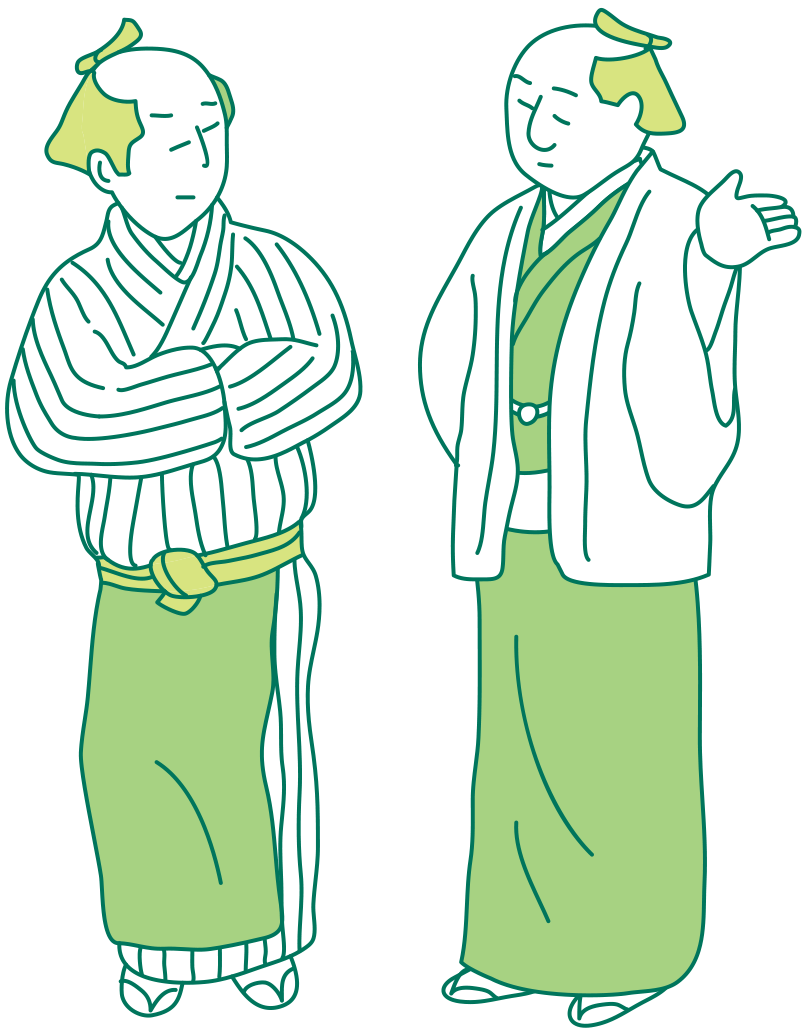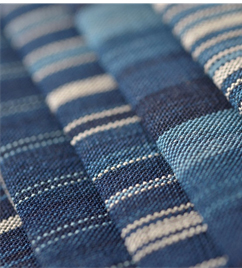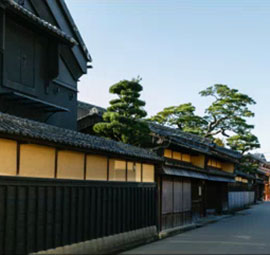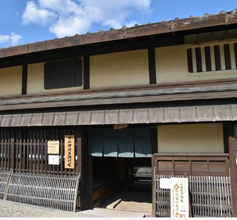Who were the Matsusaka Merchants?

Among the merchants from Ise Province (now Mie Prefecture), Matsusaka merchants were the most influential. Matsusaka merchants had the advantage of opening shops in Edo because of specialty products like cotton and tea, as well as their access to the latest information from pilgrims headed to the Ise Grand Shrine. In the middle of the Edo period, Matsusaka merchants opened as many as 50 shops in Edo.
A Hit Product
Matsusaka Stripes Become
All the Rage in Edo

Stylishly striped Matsusaka cotton swept through Japan in the middle of the Edo period. Because of laws that limited excessive spending, people couldn't wear extravagant clothing, so the design of Matsusaka cotton, which looked plain from a distance, but stylish up close, captured the hearts of the people of Edo. It even spread to the world of kabuki: There is a line in a kabuki play referring to wearing a striped kimono as "wearing a Matsusaka."
Unique Management Style

Remotely Managing Stores
in Edo from Matsusaka
Since the regional government limited people moving to other cities, the heads of most merchant families did not go to Edo. Rather, they stayed in Matsusaka and managed their Edo stores by sending detailed instructions through the mail.
The Ozu Family Store
Edo's Leading Paper Wholesaler
Even earlier than the Mitsui, Hasegawa, and Nagai families, the Ozu family established a store in Edo; in 1653, Nagahiro III opened the paper store "Ozuya" in Edo's Odenmacho. Later, he opened the cotton store "Iseya" next door, and the paper store "Ohashiya" in Edo's Honcho. As the publishing industry began to expand, Ozu's businesses grew, and he became Edo's number one paper wholesaler.

Tanbaya
The Hugely Successful
Cotton Business in Edo
Along with the Mitsui, Ozu, and Nagai families, the Hasegawa's are one of Matsusaka's leading merchant families. In 1675, Jirobe III opened the cotton store "Tanbaya" in Edo’s Odenmacho, and went on to open five stores, including the stores "Kameya," and "Ebisuya." Hasegawa operated with steady management as one of their main pillars of business, and founded an association with other cotton wholesalers, aiming for solidarity in the industry.
Sound Principles of Business
Businesspeople during the Edo period, including Matsusaka merchants, embraced three ideas: Resourcefulness, Ingenuity, and Accuracy. "Resourcefulness" included thrift and using money wisely, "Ingenuity" was working hard to create new opportunities, and "Accuracy" applied to accounting as well as management. These principles could just as easily be applied to modern business.
560,000 Sheets of Cotton
The streets of Edo's Odenmacho were lined with wholesale cotton dealers, and many of the stores were owned by Ise merchants who sold Matsusaka cotton. Even among those, the Matsusaka merchants boasted tremendous business. At the end of the 18th century, roughly 560,000 sheets of cotton were shipped from Matsusaka to Edo each year.
Let’s Walk Matsusaka
Former Hasegawa Residence
This building is the former home of the Hasegawa family. Located in Uomachi, Matsusaka, it has been designated as National Important Cultural Property and is open to the public.

This building is the former home of the Hasegawa family. Located in Uomachi, Matsusaka, it has been designated as National Important Cultural Property and is open to the public.

